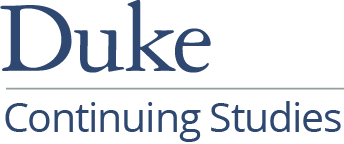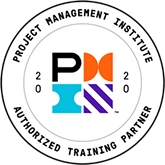Lean Fundamentals
- Traditional Classroom: 4-day
- Virtual Instructor-led: Eight 3-hour sessions
Lean thinking is a widely adopted customer-facing improvement approach that can greatly simplify processes and improve performance in both manufacturing and service organizations. Effectively applying Lean principles and tools can significantly improve value-added productivity and reduce waste and associated costs. At the same time, these tools drive an improvement in customer service and satisfaction levels.
The intensive four-day program gives participants a practical, hands-on, learning-by-doing experience applying Lean methodologies in a simulated environment. This course is taught and facilitated by Lean practitioners, leaders, and coaches, each with multiple years of successfully applying Lean in business organizations.
Target Audience
Those who will benefit from this course include managers and leaders that are interested in an understanding of Lean principles and organizational leaders interested in implementing Lean in their organizations.
Learning Objectives
- Explain Lean principles.
- Define waste in an organization and opportunities to eliminate waste.
- Identify a value stream and define improvements.
- Build basic skills in continuous improvement.
- Review process flow and identify flow rates and bottlenecks.
- Practice the implementation of mistake-proofing.
- Understand the concept of kaizen events.
Key Takeaways
- Basic Lean principles — how the pieces of Lean fit together
- Types of waste and where waste is found — to help you visualize the wasted movement of people and parts in your organization
- Value and the value stream — to give you a picture of the entire value stream, as well as value-added and non-value-added time
- Overview of continuous improvement and tools — to provide you with the mindset and tools for your ongoing improvement journey
- Overview of process flow and pull systems — to help you design work in a way that consistently produces value with the least amount of effort and waste
- Overview of 5S — how to organize your work spaces
- Introduction to mistake-proofing — to help you visualize how to reduce errors in your organization
- Overview of running Kaizen event — to show you how to run an event in your organization
Course Outline
Introduction
- Overview
- Objectives
- Introductions
Module 1: What Is Lean?
- Definition of Lean
- Definition of Waste
- Exercise: Lean Storming
Module 2: The Philosophy of Lean
- Learning to See
- Kaizen Framework
- Continuous Improvement
- Exercise: TPC Analysis for Mobilizing Commitment
Module 3: Identify What Adds Value
- Muda, Muri, Mura
- Determining What Adds Value
- Exercise: Finding Productive Hours
Module 4: Addressing Non-Value
- 8 Wastes — TIMWOOD Plus
- Exercise: Toast Kaizen Video
Module 5: The 5 S’s
- Applying 5S
- Sort
- Set in Order
- Shine
- Standardize
- Sustain
Module 6: Wrap-Up Exercise: Miracle Dot
- Movement through the Value Stream
- TAKT Time
- Flow Rate
- Constraint (Bottleneck) Management
Module 7: Continuous Improvement
- Introduction to Kaizen
- Plan-Do-Check-Act
- Kaizen Event Ground Rules
- SCORE Overview
- Exercise: Charter the Kaizen Event
Module 8: Problem-Solving Tools
- Pareto Charts
- Affinity Diagrams
- Cause and Effect Diagram (Fishbone)
- 5 Whys
- Exercise: Cause and Effect Diagram
- Histograms
- Control Charts
- Scatter Diagrams
- Graphs
- Check Sheets
- Exercise: Problem Solving Tools
Module 9: Mapping the Process
- Exercise: Applying COPIS
- Exercise: Applying the Product Synchronization
- Exercise: Applying the Product Matrix
- Spaghetti Diagram
- Observation Sheet and Time Analysis Template
- Exercise: Capturing Cycle Time, Lead Time, and Inventory
- Exercise: Takt Time
Module 10: Putting Together a Value Stream Map
- SCORE Select Step
- 4 Steps to Value Stream Mapping
- 7 Flows
- Exercise: Value Stream Mapping
Module 11: Finding the Number of Resources
- Total Product Cycle Time (TPc/T)
- Product Matrix
- Exercise: Ideal vs. Actual
Module 12: Finding Waste in Sequence of Events (SOE)
- Completing the Observation Sheet
- Exercise: Sequence of Events
- Value Stream Analysis (VSA)
- Exercise: VSA for Credit Card Application Process
Module 13: Identifying Process Flow to Move to Problem Solving
- Demand at Capacity
- Exercise: Practice Calculating Demand at Capacity
- Line Balancing
- Exercise: Line Balancing
Module 14: Workflow Design, Flex Fences, Daily Rate, and Linearity
- The Work Area
- Identify the Critical Path for Flow
- Exercise: Making Things Visible
- Flex Fences
- Daily Rate
- Exercise: Flex Fence Violation
- Exercise: Linearity
Module 15: Employee Engagement and Alignment
- Visual Management Systems
- Stand-Up Meetings
- Gemba Walks
- Exercise: Stand-Ups and Gembas
- Flexible Workforce
Module 16: Mistake-Proofing
- Poka-Yoke
- 4 Types of Inspections
- Exercise: What Would You Do?
- Operational Methods Sheets
Module 17: Lean Event
- SCORE Overview
- Kaizen Event Ground Rules
- Kaizen Event Leadership Roles
- SCORE Steps
- Exercise: Creating the Action Plan
- Exercise: Leadership Report-Out
Module 18: Implementing and Sustaining the Change
- Common Causes of Failure
- Change Management Plan
- Exercise: Creating a Shared Need
- Metrics
- Kanban
- Exercise: Miracle Dot Round 3
- Summary and Action Planning
MDI893-2 Course Code
For more information on this topic, as well as how Corporate Education Group can help power your organization’s performance, contact us via email or call 1.800.288.7246 (US only) or +1.978.649.8200. You can also use our Information Request Form!






